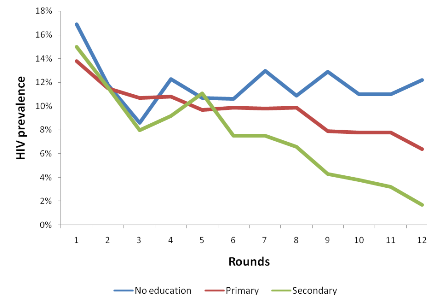Skills-based health education
Life Skills-Based Education (LSBE) or Skills-Based Health Education is being adopted as a means to empower young people in challenging situations. At present, LSBE often applies to health and social issues which are not traditionally included in the academic curriculum and which demand the adoption of positive behaviours by young people including health among human rights and gender equality. However, skills-based content and methods can also enhance the quality of traditional subjects such as literacy and numeracy by making them more relevant and engaging for the learners (UNICEF Lifeskills).
LSBE is an interactive process of teaching and learning which enables learners to acquire knowledge and develop attitudes and skills supporting the adoption of healthy behaviours. It uses participatory and gender-sensitive teaching and learning methods allowing all participants (including the facilitator) equal opportunities of all learners to listen and learn from each other using self-guided and experimental learning (learning by doing). For more in-depth information please visit UNICEF Lifeskills.
Life Skills-Based Education (LSBE) Impact on Child Health
Knowledge, behaviours, attitudes and skills play a critical role in combating disease including vector borne infections such as malaria;
water and sanitation related diseases such as diarrheal diseases,
Neglected Tropical Diseases such as trachoma and schistosomiasis; nutrition related conditions such as
micronutrient deficiencies and other forms of malnutrition.
An example of LSBE - Lessening Worm Infection Prevalence
Lessening the prevalence of worm infections can be carried out through knowledge promotion of symptoms and transmission; behaviours that are specifically relevant to the transmission of helminths in different communities; attitudes such as responsibility for personal, family and community health; and skills such as the ability to communicate messages about worm infection to families, peers and members of the community (WHO 1996).
An example of LSBE - Lessing the Spread of HIV

A long term study was conducted in rural Uganda over an 11 year period from 1990 to 2001, covering different stages of the epidemic, demonstrating that education itself has a protective influence on HIV/AIDS prevention (De Walque 2005). The findings suggest that over a decade, educated young adults, especially females, became more likely to respond to HIV/AIDS information and prevention campaigns by effectively reducing their sexual risk behaviour.
To find out more about the relationship between HIV and Education the Ed SIDA Manual for Modelling the impact of HIV on Education Systems are freely downloadable excel spreadsheet-based models which can be used for education planning in countries with high HIV prevalence.
Further Reading

